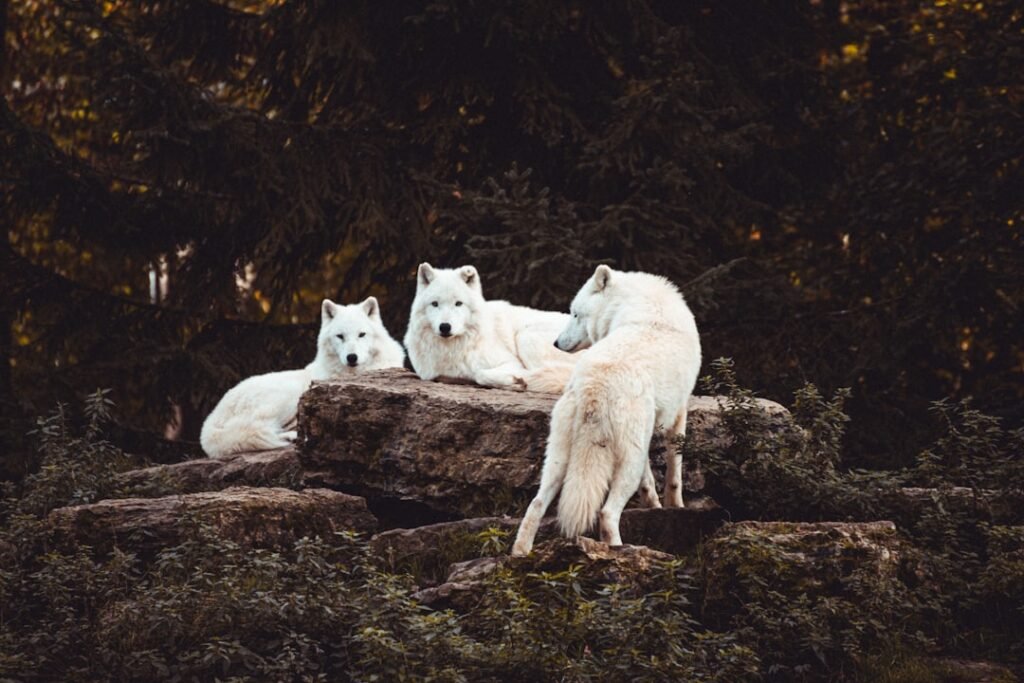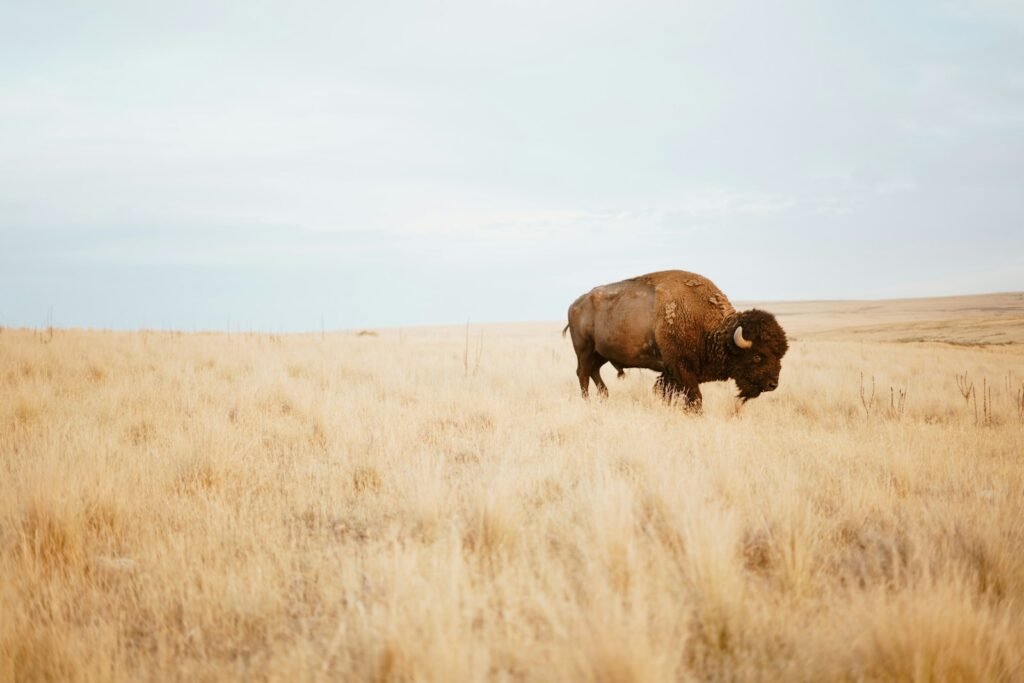Ever wonder why some people naturally gravitate toward group activities while others prefer solitary pursuits? The fascinating connection between zodiac signs and animal social behavior might hold more answers than you’d expect. Just as animals in the wild organize themselves into complex social structures like herds, packs, and hives, human beings also exhibit similar patterns based on their astrological traits.
What’s remarkable is how closely our zodiac characteristics mirror the survival strategies of different animal communities. Some signs thrive in large social groups, others excel in tight-knit family units, and a few prefer the independence of solitary creatures. Let’s dive in and explore this captivating intersection of astrology and animal behavior.
Aries: The Pack Leader Dynamic

Passionate and self-reliant, Aries don’t follow the herd simply because it’s the popular thing to do. As an astrological representation of Aries’ strength and fierce tenacity, the ram serves as the sign’s official emblem. This fire sign mirrors the alpha found in wolf packs and lion prides.
Within a pack, there are typically breeding pairs (the parents) who lead their family group, aided by their offspring who help with hunting and caring for pups. This organized social structure allows wolves to take down large prey and ensures the protection and education of their young. Aries individuals naturally assume leadership roles within their social circles, much like pack leaders who make crucial decisions for group survival. Their competitive nature and fearless approach to challenges echo the territorial instincts of dominant animals who must constantly prove their worth to maintain their position.
Taurus: The Grazing Herd Mentality

Taurus is an Earth sign, and it’s no surprise that this zodiac sign is represented by the bull. Much like cattle or buffalo that form peaceful grazing communities, Taurus individuals prefer stable, harmonious group where everyone knows their place.
Wildebeest are very vulnerable to predators, which is why they live in such large herds. When a predator gets near, they make an alarm call to signal the other members of the herd. Similarly, Taurus people create strong support networks and are incredibly loyal to their chosen social circles. They value consistency and routine in their relationships, preferring long-term connections over fleeting social encounters. Their protective instincts kick in when their “herd” faces threats, making them reliable allies who will stand firm against any danger.
Gemini: The Fluid Flock Formation

Those born under the sign of Gemini are sometimes extremely adaptable yet versatile, even to the point of having two distinct personalities at once. This is also much like the dolphin! Gemini’s social behavior resembles that of highly intelligent marine mammals who form flexible pod structures.
Dolphins exhibit one of the most complex social structures in the aquatic world. Living in groups called pods, these intelligent marine mammals communicate using a range of sounds and signals. Dolphins are known for their playful nature, often seen engaging in acrobatics and games. Their strong social bonds and cooperative behavior in hunting and protection reflect their advanced cognitive abilities and emotional intelligence. Like dolphins switching between different pod configurations, Geminis move seamlessly between various social groups, adapting their communication style to fit each environment. Their quick wit and curiosity make them excellent social connectors, bridging gaps between different communities.
Cancer: The Protective Colony Structure

Cancer’s deep emotional connections mirror the intricate family bonds found in elephant herds and penguin colonies. Moving beyond the insect world, elephants are renowned for their strong social bonds and complex social structures. These gentle giants live in matriarchal herds, led by an experienced female known as the matriarch. The herd typically consists of related females and their offspring, while males leave the herd upon reaching adolescence.
Penguin colonies, especially those of Emperor Penguins, demonstrate the vital importance of cooperation and warmth. They engage in communal huddling to conserve heat and protect their chicks from the harsh Antarctic climate. This behavior exemplifies the collective effort to ensure the survival of each member, highlighting a beautiful example of unity and endurance in the animal world. Cancer individuals create similar nurturing environments where emotional support and mutual care are paramount. They instinctively know when someone in their social circle needs comfort, much like how elephants console distressed family members or penguins share warmth during harsh conditions.
Leo: The Pride Hierarchy

Lion prides are social units typically composed of related females, their offspring, and a small number of adult males. Female lions often take on the role of hunters, working cooperatively to take down prey, while males are responsible for defending the pride’s territory. This cooperative structure ensures the pride’s dominance in their habitat, showcasing the strength that lies in unity.
Leo’s natural charisma and need for recognition perfectly mirror the dramatic social of lion prides. They thrive in social situations where they can showcase their talents and receive admiration from their “pride.” Like male lions who protect their territory, Leos are fiercely protective of their social status and the people they care about. Their generous nature ensures that everyone in their social circle benefits from their success, just as lions share their kills with the entire pride.
Virgo: The Efficient Colony Organization

Ants are often considered the epitome of social animals. These tiny insects live in highly organized colonies that can range from a few dozen individuals to millions. Each ant colony operates as a single entity, with a division of labor that includes workers, soldiers, and reproductive individuals. Virgo’s meticulous nature and desire for order closely resembles the complex organizational systems found in ant colonies.
Ant colonies are intricate societies where every member plays a specific role, ensuring the survival of the colony. Within these communities, you’ll find queens, workers, and soldiers. The queen’s primary duty is reproduction, while the worker ants maintain and protect the nest, forage for food, and care for the young. This highly efficient division of labor allows ant colonies to manage complex tasks, enabling them to thrive in diverse environments. Virgos naturally organize their social groups with similar efficiency, taking on supportive roles that ensure everyone’s needs are met. They’re the ones who remember birthdays, coordinate group activities, and make sure no detail is overlooked.
Libra: The Diplomatic Herd Balance

Libra’s quest for harmony and balance mirrors the sophisticated social of flamingo flocks and swan communities. Colonies of flamingos can range in size from 50 individuals to thousands of members. They typically form groups because they share the same food source, which consists of algae and shrimp. One of the benefits of living together is that they do not need to travel far to find mates.
Like flamingos who maintain peaceful coexistence while sharing resources, Libras excel at creating harmonious social environments where everyone feels included and valued. They naturally mediate conflicts and ensure that group decisions benefit all members. Their diplomatic skills help maintain social cohesion, much like how certain bird species use complex signals to coordinate group movements without creating chaos or competition.
Scorpio: The Selective Pack Loyalty

Scorpio’s intense loyalty and selective trust mirror the behavior of wolves and other predators who form tight-knit hunting groups. Wolves also form small packs typically consisting of 2-15 individuals, most commonly 4-6 members. Wolf packs, which are typically family units led by breeding pairs, hunt together and defend themselves against intruders. Unlike signs that thrive in large social gatherings, Scorpios prefer smaller, more intimate groups where deep bonds can develop.
Their protective instincts and fierce loyalty to chosen family members echo the behavior of pack animals who will fight to the death to defend their group. An example of altruism comes from ground squirrels, who may warn other members of their group about a predatory hawk overhead. This brings the hawk’s attention to the individual giving the warning call. This risky behavior benefits other individuals in the squirrel’s group. Scorpios similarly put themselves at risk to protect those they love, creating unbreakable social bonds that can withstand any challenge.
Sagittarius: The Migratory Flock Freedom

A well-studied example of this mechanism can be seen in migrating birds. Flocks of migrating birds generally don’t have the same hierarchical structure we see in many mammal communities, where control is centralized to specific individuals. Instead, decision-making is dispersed among all individuals in the group. Sagittarius individuals embody this free-flowing, egalitarian approach to social interaction.
Their adventurous spirit and need for freedom align perfectly with migratory patterns where the group moves together toward common goals while maintaining individual autonomy. Like birds who take turns leading the flock during long journeys, Sagittarians prefer social structures that allow for shared leadership and collective decision-making. They resist rigid hierarchies, preferring groups that adapt and flow based on circumstances rather than fixed rules.
Capricorn: The Structured Territorial System

Elephants have matriarchal herds led by experienced females. Meerkats work together to raise young and watch for predators. These structures help animals survive and thrive. They can affect how food is shared, territory is defended, and offspring are cared for. Capricorn’s methodical approach to building social networks mirrors the structured territorial systems of mountain goats and other climbing animals.
One meerkat stands watch and acts as a “sentry.” It will alert the other members of the group if a predator is spotted. When babies are born, all the other meerkats pitch in and help take care of the babies. Like meerkats with their organized sentinel systems, Capricorns naturally assume responsibility for monitoring threats and ensuring group security. They build social structures that can withstand challenges over time, preferring established hierarchies where everyone understands their role and responsibilities.
Aquarius: The Innovative Swarm Intelligence

Eusocial colonies consist of many individuals from the same species that live close together. They each have unique roles within the colony such as food collection, defense, or reproduction. What’s interesting about this social structure is that most of the individuals in it don’t reproduce. Aquarius embodies the revolutionary aspects of swarm intelligence found in bee colonies and other eusocial insects.
One easily observable example of this is foraging behavior, when a community of social insects must make a decision on which areas are best for gathering food or building a nest. Social insect species have evolved a number of different mechanisms to utilize their population size, increasing both efficiency and accuracy. Like bees who make collective decisions for the greater good, Aquarians prioritize group welfare over individual gain. They’re drawn to social movements and communities that work toward humanitarian goals, often sacrificing personal interests for collective progress.
Pisces: The Schooling Intuition Network

This concept applies to caterpillars feeding together on a leaf, a herd of wildebeest, schools of fish, and flocks of birds. A landscape filled with solitary wildebeest will offer easy pickings for large predators. Pisces individuals navigate social waters with the fluid intuition of fish schools, where the group moves as one unified entity.
Herd behavior occurs in animals in herds, packs, bird flocks, fish schools, and so on, as well as in humans. Voting, demonstrations, riots, general strikes, sporting events, religious gatherings, everyday decision-making, judgement, and opinion-forming, are all forms of human-based herd behavior. Their empathetic nature allows them to sense the emotional currents within their social groups, adjusting their behavior to maintain harmony and flow. Like fish who instinctively know when to change direction to avoid danger, Pisceans pick up on subtle social cues that others might miss, helping their groups navigate emotional or social challenges.
Conclusion

The remarkable parallels between zodiac signs and animal social structures reveal something profound about human nature. Whether we’re naturally drawn to pack leadership like Aries, prefer the gentle cooperation of Taurus herds, or thrive in the innovative swarm intelligence of Aquarius colonies, our astrological traits seem to mirror the survival strategies that have evolved in the animal kingdom over millions of years.
These connections suggest that our social instincts might be more deeply rooted in natural patterns than we previously imagined. The next time you find yourself gravitating toward certain types of social situations or feeling uncomfortable in others, consider which animal community your zodiac sign most closely resembles. What do you think about this fascinating intersection between the stars and the natural world? Tell us in the comments.



